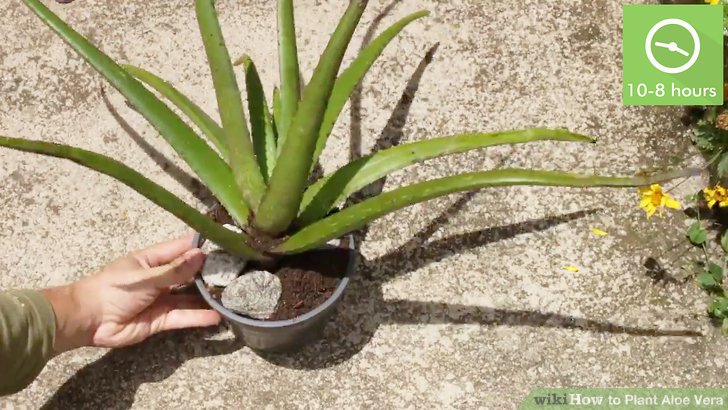Aloe plants, with their striking leaves and distinctive structure, are more than just visually appealing houseplants. Their multifaceted benefits, be it for ornamental or medicinal purposes, have garnered significant attention and fascination among plant enthusiasts. Successfully planting an aloe plant not only enhances your living space but also offers practical advantages. This comprehensive guide presents effective techniques for planting aloe, taking into account its unique requirements and ecological preferences.
Understanding the Botanical Nature of Aloe
Aloe, belonging to the Asphodelaceae family, is a succulent that thrives in arid environments. With over 500 species, the most popular among houseplant aficionados is Aloe vera, renowned for its soothing gel. Succulents like aloe have adapted to conserve moisture, thus necessitating specific conditions for optimal growth. Their fleshy leaves not only serve as reservoirs for fluid but also assist in photosynthesis, enabling these resilient plants to thrive in less-than-ideal circumstances.
Choosing the Right Container
When selecting a container for your aloe plant, consider drainage as paramount. Aloe plants are particularly susceptible to root rot, which occurs when excess water accumulates. Aim for a pot with a drainage hole to ensure swift water runoff. Terra cotta pots are an excellent choice due to their porous nature, which allows the soil to dry out rapidly. However, decorative ceramics or lightweight plastics with drainage holes can also serve the purpose well.
Moreover, a wider pot provides ample room for the roots to expand. However, avoid overly deep containers since aloe plants prefer to grow laterally rather than vertically. The choice of pot can significantly influence your plant’s health, making it essential to prioritize functionality alongside aesthetics.
Soil Selection: A Vital Component
Soil composition plays a critical role in the successful establishment of your aloe plant. Opt for a well-draining potting mix that caters specifically to cacti and succulents. These specialized mixes typically contain a blend of sand, perlite, and peat, facilitating optimal drainage while retaining just enough moisture. Avoid using heavy, moisture-retentive soils as they can lead to disastrous outcomes.
Another fascinating aspect of aloe soil is its pH level. Aloe plants thrive in a slightly acidic to neutral pH (6.0-7.0). Testing the pH is often overlooked yet serves as a vital step in ensuring the well-being of your plant. A simple pH testing kit can help you derive effective remedial measures if the levels are off-kilter.
Choosing the Right Location: Light Matters
The placement of your newly potted aloe plant can either promote its growth or hinder it tremendously. Aloe vera thrives in bright, indirect sunlight. Direct sunlight may scorch its leaves, leading to discoloration and diminished growth. A south or west-facing window usually provides an ideal balance of light and warmth.
If natural light is scarce in your home, consider utilizing grow lights designed for succulents. Positioning the light about 12-24 inches from the plant ensures your aloe receives adequate illumination. Observing your plant’s behavior can also provide helpful hints; if it begins to stretch towards the light, it may indicate a need for a brighter location.
Watering Techniques: The Delicate Balance
Watering your aloe plant may seem straightforward, yet it requires a nuanced approach. A common mistake among novice gardeners is overwatering, which can lead to a plethora of issues, including root rot and fungal infections. Instead, adhere to the rule of “soak and dry.” This means thoroughly watering your aloe plant and allowing the soil to dry out completely before the next watering session.
Typically, during the growing season (spring and summer), your plant will require water every 2-3 weeks. Conversely, in the dormant phases (fall and winter), watering should occur less frequently—perhaps once a month or even less, depending on thermal conditions.
Recognizing Signs of Distress
Monitoring the health of your aloe plant is crucial in maintaining its vitality. Yellowing leaves often indicate overwatering, while browning edges suggest underwatering or sunburn. An encouraging sign is the development of new offsets or “pups,” which are baby aloe plants that can be propagated to expand your collection.
Understanding these indicators allows for timely interventions. It’s essential to be vigilant, as transformation and adaptation can significantly influence the aloe’s longevity and aesthetic appeal.
Fertilizing: Enhancing Growth Responsibly
While aloe plants are not heavy feeders, a timely application of fertilizer can provide essential nutrients that improve growth, particularly during the growing season. Opt for a diluted, balanced, water-soluble fertilizer, administered once a month or bi-monthly. Over-fertilizing can lead to salt buildup, which can suffocate your plant’s roots.
As a general rule, always err on the side of caution. In the world of succulents, less truly is more when it comes to nourishment. A well-established aloe can thrive with minimal intervention, allowing its natural resilience to shine.
Final Thoughts: Caring Beyond Planting
Planting an aloe plant successfully is a unique blend of science and artistry. Each step, from initial selection to ongoing care, requires consideration and attentiveness. The result is not merely a houseplant but a living testament to resilience and adaptability. The fascination many feel for aloe plants stems from their dual role as decorative and utilitarian assets, enriching spaces while offering numerous benefits.
With proper attention to detail and an eagerness to learn, anyone can cultivate a thriving aloe plant that embodies both beauty and practicality.





Leave a Comment